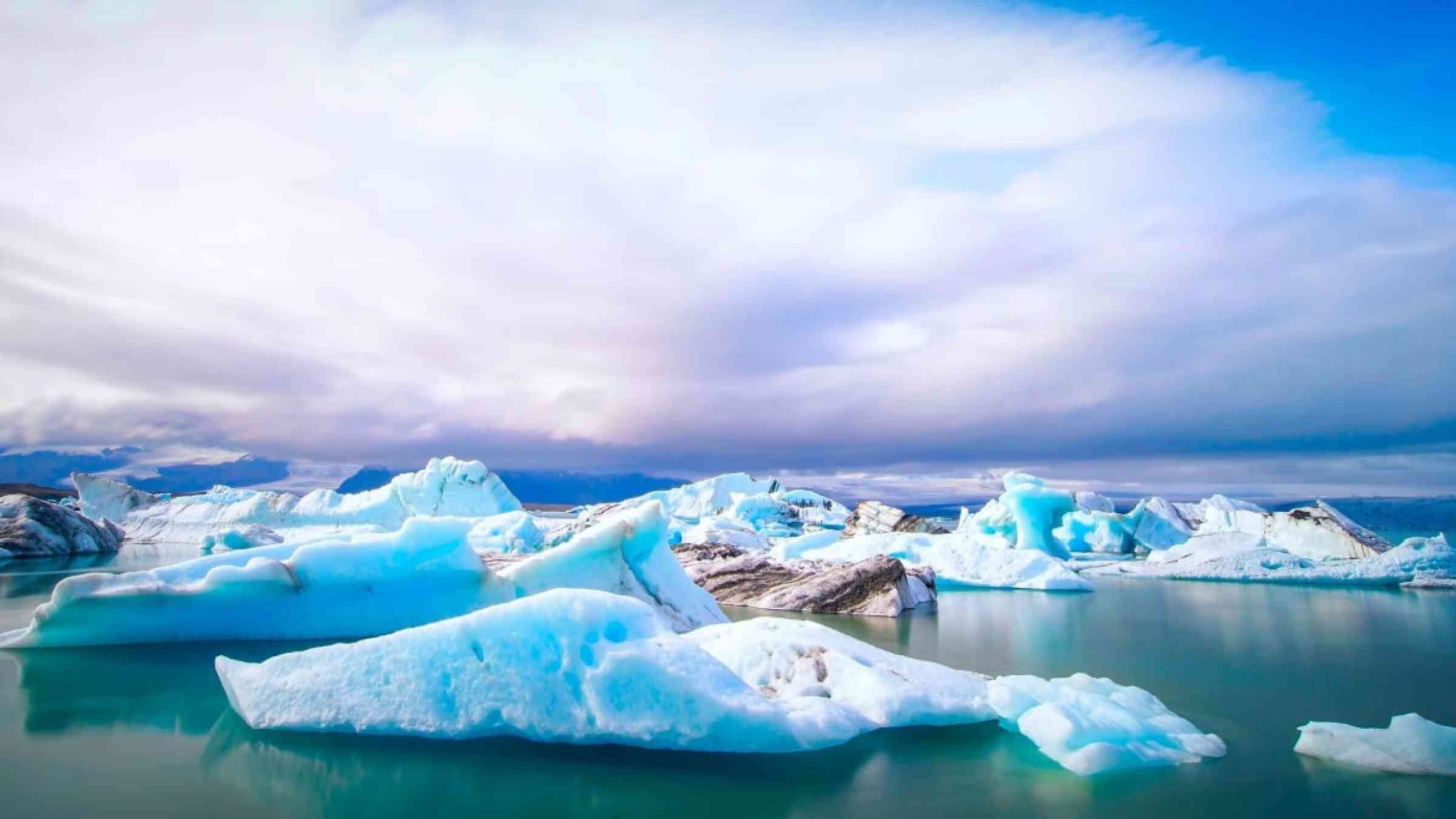Atmospheric scientists link Arctic Sea loss ice to strong El Niño events

El Niño, a climate pattern where warm waters in the eastern Pacific fuel hotter weather, is finally beginning to wane after bringing a long stretch of record heat and heavy precipitation across the world since last summer.
A new study, published today in Science Advances by researchers at the University at Albany and Nanjing University of Information Science and Technology in China, has found that these events, which typically occur once every few years, might become even stronger due to melting Arctic sea ice.
Using a combination of climate model simulations and observational data, the researchers found that the current interaction of Arctic sea ice with the atmosphere reduces the strength of El Niño events by up to 17 percent, compared to when the interaction is removed.
The amount of sea ice that survives the Arctic summer has declined 12.2 percent per decade since the late 1970s and projections show the region could experience its first ice-free summer by 2040.
“Climate models are already projecting a strengthened El Niño in the upcoming decades due to global warming. Arctic sea ice is also projected to decline rapidly in the upcoming decades, said Aiguo Dai, a Distinguished Professor in the Department of Atmospheric and Environmental Sciences and study co-author.
“Our new study suggests that Arctic sea ice-air interactions in the current climate significantly reduce the amplitude of El Niño–Southern Oscillation, compared to the case without such interactions. This represents a new example of the various impacts of Arctic sea ice on our climate.”
Sea ice-El Niño interaction
To reach their findings, the researchers performed and analyzed two global climate model simulations for 500 years using the Community Earth System Model from the National Center for Atmospheric Research. The simulations, carried out on a computer hosted at the UAlbany Data Center, had fixed atmospheric C02 levels, one with sea ice-air interactions in the Arctic, and another without it.
By examining the difference between the two simulations, the researchers found that Arctic sea ice-air interactions weaken El Niño-related variations in the tropical Pacific Ocean by about 12 to 17 percent, compared to when the interaction was removed.
“The difference between the two model simulations represents the impact of the Arctic sea ice-air coupling, which led to significant changes in tropical Pacific Ocean mean climate states and El Niño–Southern Oscillation strength. This was mainly due to asymmetric impacts of positive and negative sea-ice anomalies on surface fluxes, the exchange of heat crossing the surface between the ocean and the atmosphere, said Jiechun Deng, an associate professor at Nanjing University of Information Science and Technology and the study’s lead author.
“Our findings highlight the crucial role of sea ice-air interactions in regulating El Niño activity over the tropical Pacific. It calls for a more realistic representation of such interactions in current climate models, to better project El Niño and its various impacts in a warming future."
Observed historical changes in El Niño events from 1921–1960 (with strong sea ice-air interactions) to 1971–2000 (with weak interactions) were qualitatively consistent with the model results.
Changes in Arctic climate
This study is the latest in a series of research papers by Dai and his collaborators over the last several years that focus on changes in Arctic climate.
In 2019, Dai led a study examining the causes of Arctic Amplification, a term used to describe the Arctic’s warming rates at two to three times the rest of the planet. He published another study in 2022 that showed how fluctuations in Arctic sea ice cover impact Atlantic sea surface temperatures.
“The main takeaway is that shrinking Arctic sea ice has many far-reaching climate impacts,” Dai said. “We need to further explore these impacts in order to fully understand the consequences of sea ice loss caused by global warming.”
Dai’s study adds to findings from a 2022 research paper, co-published by a group of climate scientists, led by UAlbany’s Jiping Liu in Nature Communications, that found future Arctic sea ice loss could increase the frequency of strong El Niño events.